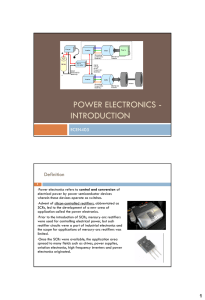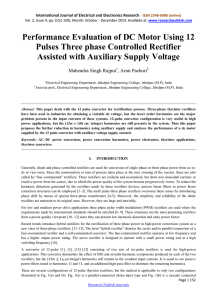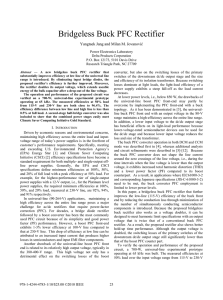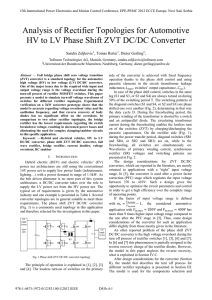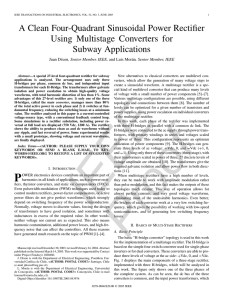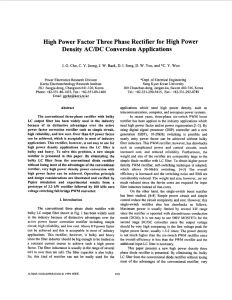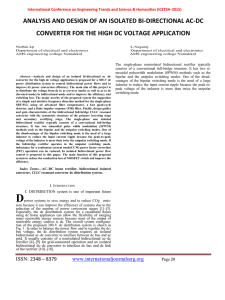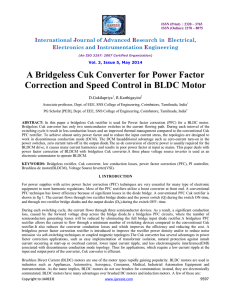Single-Phase Unity Power-Factor Double Buck Rectifier: Topology
advertisement
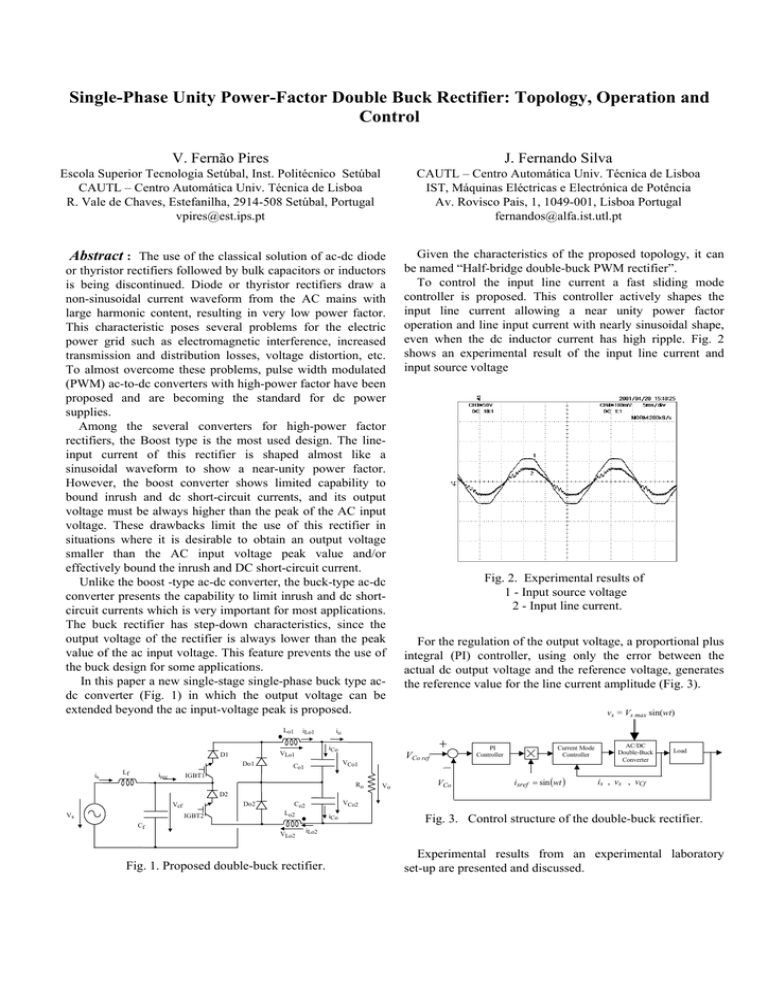
Single-Phase Unity Power-Factor Double Buck Rectifier: Topology, Operation and Control V. Fernão Pires J. Fernando Silva Escola Superior Tecnologia Setúbal, Inst. Politécnico Setúbal CAUTL – Centro Automática Univ. Técnica de Lisboa R. Vale de Chaves, Estefanilha, 2914-508 Setúbal, Portugal vpires@est.ips.pt CAUTL – Centro Automática Univ. Técnica de Lisboa IST, Máquinas Eléctricas e Electrónica de Potência Av. Rovisco Pais, 1, 1049-001, Lisboa Portugal fernandos@alfa.ist.utl.pt Abstract : The use of the classical solution of ac-dc diode or thyristor rectifiers followed by bulk capacitors or inductors is being discontinued. Diode or thyristor rectifiers draw a non-sinusoidal current waveform from the AC mains with large harmonic content, resulting in very low power factor. This characteristic poses several problems for the electric power grid such as electromagnetic interference, increased transmission and distribution losses, voltage distortion, etc. To almost overcome these problems, pulse width modulated (PWM) ac-to-dc converters with high-power factor have been proposed and are becoming the standard for dc power supplies. Among the several converters for high-power factor rectifiers, the Boost type is the most used design. The lineinput current of this rectifier is shaped almost like a sinusoidal waveform to show a near-unity power factor. However, the boost converter shows limited capability to bound inrush and dc short-circuit currents, and its output voltage must be always higher than the peak of the AC input voltage. These drawbacks limit the use of this rectifier in situations where it is desirable to obtain an output voltage smaller than the AC input voltage peak value and/or effectively bound the inrush and DC short-circuit current. Unlike the boost -type ac-dc converter, the buck-type ac-dc converter presents the capability to limit inrush and dc shortcircuit currents which is very important for most applications. The buck rectifier has step-down characteristics, since the output voltage of the rectifier is always lower than the peak value of the ac input voltage. This feature prevents the use of the buck design for some applications. In this paper a new single-stage single-phase buck type acdc converter (Fig. 1) in which the output voltage can be extended beyond the ac input-voltage peak is proposed. Lo1 Do1 Lf irec Fig. 2. Experimental results of 1 - Input source voltage 2 - Input line current. For the regulation of the output voltage, a proportional plus integral (PI) controller, using only the error between the actual dc output voltage and the reference voltage, generates the reference value for the line current amplitude (Fig. 3). vs = Vs max sin(wt) io iCo VLo1 D1 is iLo1 Given the characteristics of the proposed topology, it can be named “Half-bridge double-buck PWM rectifier”. To control the input line current a fast sliding mode controller is proposed. This controller actively shapes the input line current allowing a near unity power factor operation and line input current with nearly sinusoidal shape, even when the dc inductor current has high ripple. Fig. 2 shows an experimental result of the input line current and input source voltage VCo1 Co1 PI Controller VCo ref IGBT1 Ro Vo VCo Current Mode Controller i sref = sin (wt ) AC/DC Double-Buck Converter Load is , vs , vCf D2 Do2 Vcf Vs IGBT2 VCo2 Co2 Lo2 Cf VLo2 iCo Fig. 3. Control structure of the double-buck rectifier. iLo2 Fig. 1. Proposed double-buck rectifier. Experimental results from an experimental laboratory set-up are presented and discussed.



